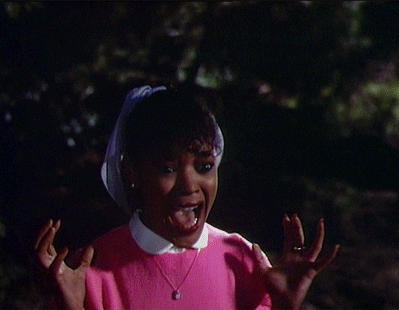Aaaaa! Spooky!

Rationale:
In this lesson, children will learn to recognize, spell, and read words containing the short vowel a = /a/. They will learn a meaningful representation by saying “Aaaaaa! Spooky!” to emphasize the /a/ sound, by reading and spelling words containing this correspondence in a letterbox lesson, and by reading a decodable book that focuses on the vowel correspondence a = /a/.
Materials:
1. Picture of a person looking at a ghost and saying /a/
2. Cover-up critter
3. White board and dry erase marker for modeling
4. Letterboxes and lowercase letter manipulatives for each child
5. Magnetic letters for teacher: s, c, a, l, p, h (x2,) t, r, k, and b
6. Several copies of decodable book, "A Tap and a Pat" by Reading A-Z (URL below)
7. Assessment worksheets for each student (URL below)
Procedures:
1. Say: “To become a great reader, we must learn the code that tells us how to pronounce words. Today we are going to learn about short a. When I say /a/, I think about seeing a ghost and saying ‘Aaaaa! Spooky!’ because it is scary!” Show the picture of the afraid person to the class and ask them to say /a/.
2. Say: “Before we learn how to spell words with /a/, we need to listen and hear the sound /a/ in different words. When we say /a/ our mouths are open, and we are making the sound from the backs of our throats.” Make a vocal gesture for /a/. Say: “I will show you first with the word cat. I heard the spooky /a/ and I felt the /a/ sound coming from the back of my throat while my mouth was open. There is a short a in cat. Let’s see if I hear the spooky /a/ in the word pair. I didn’t hear the spooky /a/, did you?” Let the class answer. “If you hear /a/ in the words that I am about to say, I want you to put your hands by your mouth like you are spooked. Do you hear /a/ in lap?
Play? Tack? Glum? Jab? Slip? Tap? Stop? Math? Hair?”
3. Say: “Let’s learn to spell words that have the spooky /a/ sound that we are learning about! What if I want to spell the word scalp? First, I need to count the phonemes… /s/ /c/ /a/ /l/ /p/. That’s five! I need five boxes." Draw five letterboxes on the white board. "I heard the spooky /a/ in the middle of the word, so I will put that in the middle box. The first phoneme I hear is /s/, /s/, /s/, so that is an S. I will put that in the first box. Next, I hear a /c/, /c/, /c/, which is a C, so that goes in the second box. After the spooky /a/, I hear /l/, /l/, /l/, that’s an L! That goes in the fourth box. The last sound I hear is /p/, /p/, /p/, so that is a P. That goes in the last box, and now I am done! Let’s all sound out the word together, then read it: /s/ /c/ /a/ /l/ /p/, scalp.”
4. Say: “Now it is time for you guys to practice with the letterboxes. Our first word is at, as in: you buy food at the grocery store. How many phonemes are there?" Let class answer (two.) "Good job! Line up two boxes, and put the letters in them!” Walk around the room to observe progress. “Good job, everybody! Our next word is hat, as in *student’s name* is wearing a really cool hat today! How many phonemes?" Let class answer (three.) "Good! Fill in the boxes while I walk around.” Observe progress. Have students spell chat (three phonemes,) hatch (three phonemes,) track (four phonemes,) brash (four phonemes,) and back (three phonemes,) having students count the phonemes in each as a large group before spelling. Model to students if necessary.
5. Say: “Now I am going to let you read the words you spelled, but first I am going to show you how I would read a tough word.” Write crack on the white board. "This is how I would know how to read the word without the letterboxes. I start by covering up every letter except the /a/ in the middle. Remember: /a/ makes the spooky sound! Everyone look spooked with me! Next, I know that the word starts with /c/ /r/ and I know that is spelled like c – r. The end of the word is /ck/, which I know is spelled like c – k. So, now I have /c/ r/ /a/ /ck/, crack.” Write chat, hatch, track, brash, back, and the pseudoword bram on the white board (one at a time.) Have children read each word before writing the next one.
6. Say: “Since everyone is doing such a great job with the spooky /a/ sound, we are going to move on to a book! It is called 'A Tap and a Pat.' It is about a dog named Sam who is getting pet by his owner, Pat. While he is getting pet, Sam spills his water bowl! You will have to read the rest of the book to find out what happens next!” Have children pair up and read the book together while you monitor progress. Afterwards, have the class read "A Tap and a Pat" as a large group, and discuss story events/illustrations at page boundaries.
Assessment Worksheet:
https://www.education.com/worksheet/article/jack-and-the-beanstalk-short-version-minibook/
Assessment:
Distribute the worksheets. Students read the sentences in each perforated square and draw pictures describing them. They then cut out each square and staple them together to make a mini book (Jack and the Beanstalk.)
References:
"A Tap and a Pat," Reading A-Z.
"Beginning Reading Design: Uhhhhhh, what?" Samantha Eason.
https://samanthaeason1999.wixsite.com/mysite/beginning-reading-design
